Brigid’s Day – February 1 couldn’t come soon enough to Ireland after an especially tough winter. The Red Warning storm EOWYN landed a final blow, sending force 12 hurricane winds ripping across the island on January 24, leaving hundreds of thousands without power. Although Derry, where I was, had avoided the worst effects of this weather, I still was greatly relieved to see the first snowdrops push their way up through winter’s dead leaves on the grounds of Brooke Park.
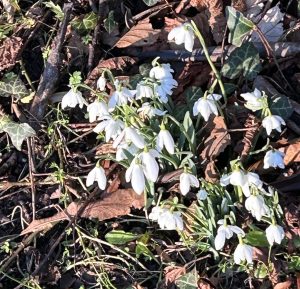
Imbolc, Celtic Spring, Brigid’s season, had arrived. The ancient Irish goddess and Christian saint have been commemorated on February 1 for centuries, sharing a name, a feast, and similar attributes. Both take particular care of the earth and animals, and each one is the patron of poets and blacksmiths. According to legend, the goddess taught the Irish to whistle. I wouldn’t be surprised if the saint could carry a tune, too.
Rosemary Rogers told the story of St. Brigid beautifully in a previous newsletter. The women’s movement in Ireland took Brigid as an avatar of encouragement and rejoiced when Mary Robinson was elected the first female president in 1992. “The hands that rock the cradle rocked the system, “ she said.
Then, for the first time in the history of any country, one woman succeeded another as an elected head of state when Mary McAleese took office in 1997. She pointed out that “It’s absolutely no accident that the peace and reconciliation and the economic progress that eluded us generations after generation for hundreds of years has it last come to pass in Ireland, where the talents of women are now flooding every aspect of life like never before.”
Melanie Lynch founded Herstory to make the talents of Ireland’s women known through a much-admired RTE series and in hundreds of community events throughout the island. It was Melanie who led the lobbying effort to make Brigid’s Day a national holiday, succeeding in 2023.
Here’s an astounding fact — Brigid’s Day is the only national holiday honoring a woman in the world (except for feasts of the Blessed Mother, but then Mary is always the exception). Brigid’s Day is celebrated not only across the island of Ireland but also in 57 Irish Embassies and 107 Consulates worldwide.
So, in this third year of commemorations, I wanted to examine a continuum of events. I’ll start and end in Derry.
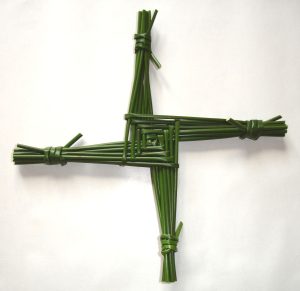
Melanie put me in touch with Mandy Blinco, who created Luxe Landscape Theater with Mark Hill. They are based in Donegal near Derry and create outdoor extravaganzas, including the fiery processions held in County Kildare to honor Brigid.
Mandy and l met in the Maiden City a few weeks before the event that was to be held in Maynooth, County Kildare. Mandy described her own background and her experience traveling to festivals in India and Southern France. We discussed the logistics of keeping torches and fiery wheels of light burning in challenging Irish weather. She’s an artist with musical as well as visual expertise, but nothing prepared me for the knock-your-socks-off spectacular procession I experienced later in Maynooth along with 6,000 people on the main street of the town, so often thought of in terms of the more patriarchal institution of the Catholic Church’s seminary. I joined Melanie Lynch and her mother, Personal Development Coach Maria Bourke, along with my friend Audrey Whitty, Head of the National Library of Ireland, for this immersive experience that really is beyond words. Please check their website for amazing videos.
A more informal gathering took place near St. Brigid’s birthplace, The Hill of Faughart. Women from the Glencree Women’s Leadership Program joined the Louth Local Development SICAP Group to celebrate women’s voices and the joy of community.
On a more formal level, last year, I attended the 1500th anniversary of her death held at St. Brigid’s in St. Brigid’s Cathedral on the site of this great monastic city Brigid founded around 470 A.D. She chose a space sacred to the goddess Brigid, where an eternal fire had been tended for centuries. Her nuns kept it burning as a sign of light against darkness until the 16th century when the monasteries of Ireland were destroyed. But in 1993, the Brigidine sisters rekindled the flame that now glows in their Solas Bhride retreat center “as a beacon of hope, justice, and peace for Ireland and the world.”
Father Liam Lawson, composer of Classics of contemporary liturgical music, wrote “Light the Fire” to honor Brigid, whom he says bridges pagan and Christian Ireland.
Brigid’s role as unifier was evident in the ecumenical ceremony of thanksgiving hosted by the Very Reverend Isabel Jackson, rector of the Cathedral. The service was co-led by the Roman Catholic Bishop of Kildare and Leighlin, Most Reverend Denis Nulty, and the Church of Ireland Bishop of Meath and Kildare, most Reverend Patricia Story. The sermon was preached by the Reverend Cannon and Dr. Alison Joyce, the rector of St. Bride’s Church, Fleet Street in London. The choir was from St. Brigid’s Catholic primary school. A representative of the Brigidine Sisters said the Prayer for Peace.
This year, on Saturday, February 1, in Derry, I joined Mayor Lilian Seenoi Barr, who describes herself as “A Maasai woman and a Derry girl,” in front of Guildhall Hall. We both wore our silver Brigid crosses on as we prayed the rosary led by a men’s group—appropriate since the monastery founded was co-ed.
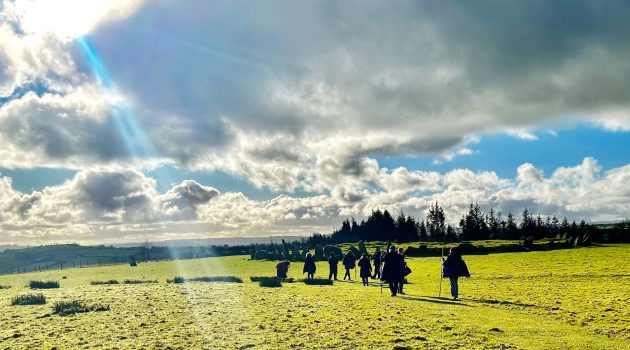
On Sunday, Pauline Ross and I head for the 4,000-year-old Beltany Stone Circle, which is 20 miles beyond Derry in Donegal but is very much part of this northwest territory. Pauline is a long-time friend who recently received the Quiet Peacemaker’s Award from the John and Pat Hume Foundation, the latest of many well-deserved honors she has received for her 30 years of service as the founder and director of the Playhouse in Derry. It served as a sanctuary in troubled times, a place for artistic expression, and proof that the arts can build peace.
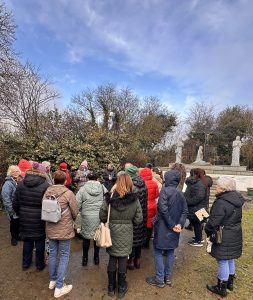
Beltany is very near the town of Raphoe, where Columcille founded a monastery in 550 A.D., which flourished under his kinsman, Eunan.
You walk through a small wood, and there it is. When I was here before, there were only sheep for company. But we arrived in time to join a group of 10 pilgrims who were marking Brigid’s Day, remembering both women and Imbloc, the first day of spring in the ancient Celtic calendar. Perfect timing as the sun broke through the clouds and lit up the stones. We stood together within that protected space, and each one of us offered a prayer or a song. One woman spoke of how we were moving from the time of the Cailleach, when the Earth hibernated, into the rebirth of spring.
“Darkness does end,” she said. “The light does come back.” ♦

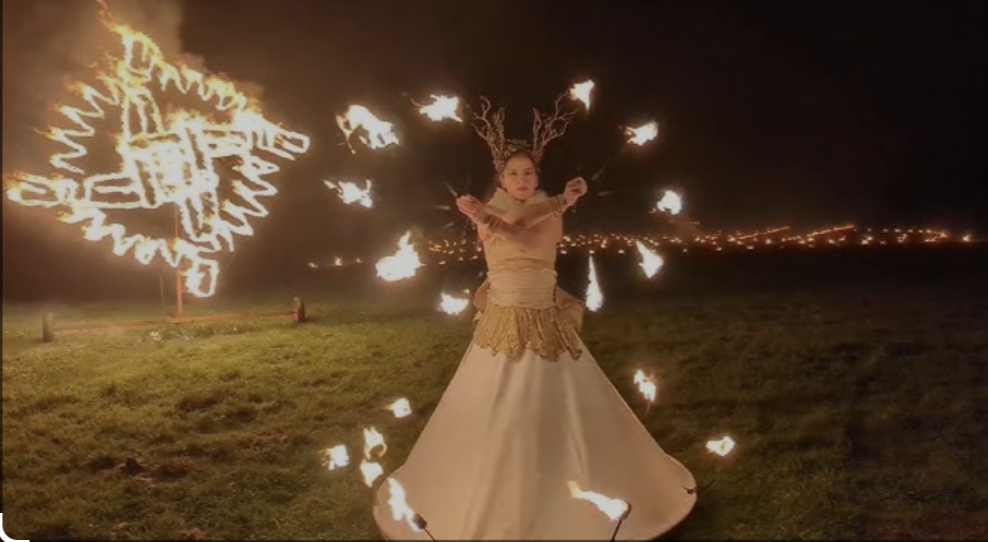
Leave a Reply